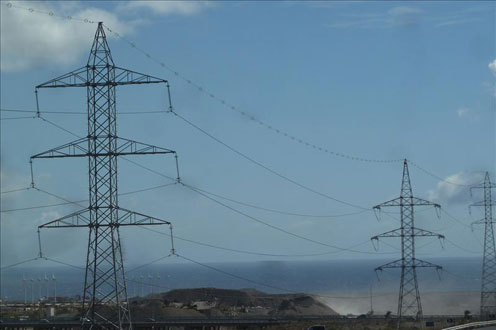This represents a reduction of 0.3% over December's figure, which can be mainly explained by energy products and the falling cost of electricity in particular. The general CPI fell by 1.9% on the previous month, which compares with the decrease of 1.6% posted in the same month in 2015.
In January, energy product prices were down year-on-year by 10.3%, almost three points higher than the previous month (down 7.5%). This increased reduction was due to electricity prices, which fell by 13% on a year ago following an increase of 0.8% last month. Solid and liquid fuels continue to moderate the rate of decline by almost one and a half points to -9.2%, in line with oil price trends. The year-on-year rate of change in unprocessed food prices grew by 0.8% in January, to 3.3%. To a great extent, this acceleration stems from fresh fruit prices.
Core inflation (which excludes the most volatile components of the CPI, such as fresh foodstuffs and energy) remained at 0.9% in January, the same level as in the previous month. Three major components contributed to this stabilisation. Specifically, processed foods and services, which maintained their year-on-year rate unchanged from December at 1.4% and 1%, respectively, and non-energy industrial goods, the year-on-year rate of which fell 0.1% to 0.5%. The slight deceleration in non-energy industrial goods prices is due to lower medicine and pharmaceutical product prices and, to a lesser degree, motor vehicles and clothing and footwear.
In month-on-month terms, the CPI fell by 1.9% in January, compared with a 1.6% decrease in the same month of 2015. This decrease can be explained by lower energy product prices, especially electricity. Non-energy industrial goods also had an effect, mainly due to the seasonal fall in clothing and footwear prices and, to a lesser degree, services - especially tourism and hospitality. The prices of unprepared foodstuffs rose by 1.3% on December, with a noticeable increase in the cost of fresh fish that was partially offset by the falling price of fresh legumes and vegetables. The price of processed foods rose by 0.1% in January.
Energy products posted a month-on-month fall of 6.2% in January due to a 4.5% decrease in solid and liquid fuels and a 10.6% decrease in the electricity tariff. The price of non-energy industrial goods fell by 4.8% on the previous month as a result of the seasonal drop in clothing and footwear prices (-15.3%). Service prices levelled off in January due to the seasonal decrease in organised travel (-8.5%) being offset by the increase in inter-urban public transport (1.2%).
The year-on-year CPI rate in January fell in all autonomous regions except Cantabria and Navarre, where it remained stable. Rates of above the national average were posted in the Basque Country (0.1%), Catalonia (0%), the Balearic Islands and Navarre (-0.1%) and Aragón, La Rioja, Madrid and Murcia (-0.2%). The remaining autonomous regions posted rates of inflation below the national average, with the lowest posted in Melilla and the Canary Islands (-0.7%). The annual CPI at constant tax rates stood at -0.3% in January, the same as the general CPI.
The INE also published the harmonised CPI (HCPI) for the month of January, which stood at a year-on-year rate of -0.4%, versus -0.1% in the previous month. If we compare this rate with that estimated by Eurostat for the Eurozone as a whole in January (0.4%), the positive inflation differential for Spain would rise by half a point to -0.8 percentage points.
To summarise, the year-on-year rate of change in the CPI decreased in January due to price trends in energy products and electricity in particular. Core inflation remained at 0.9% due to the fact that its three main components remained practically stable. The inflation differential remains positive for Spain when compared with the Eurozone, which is enabling gains in competitiveness and boosting Spanish exports.
In January, the INE updated the weightings assigned to the various headings that comprise the CPI shopping basket, as it does as standard in this month of every year. The changes are minor, with non-energy industrial goods and services the headings where the largest weighting increases have been made: 2% for the former and 1.2% for the latter. These changes have been made in exchange for weighting decreases applied to energy products (-5.9%), unprepared foods (-2.9%) and processed foods (-0.4%).





